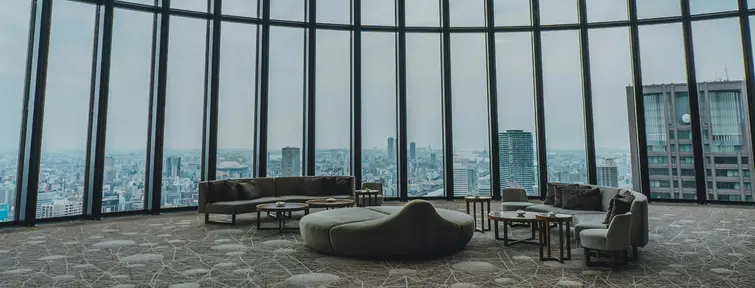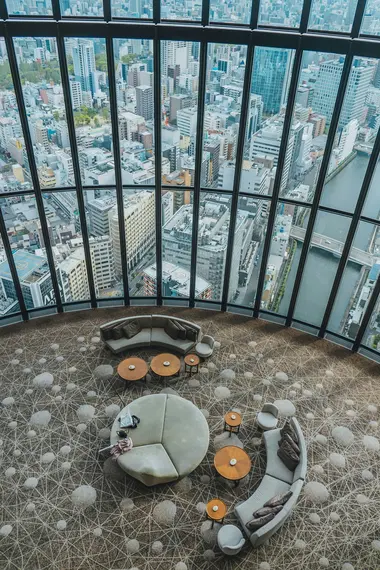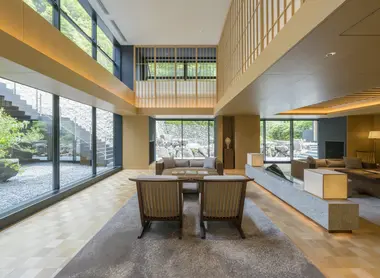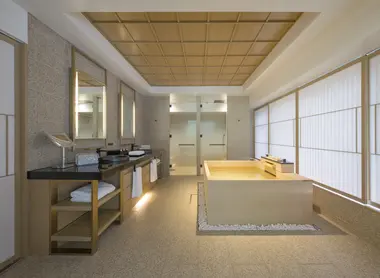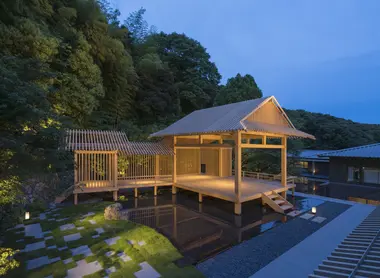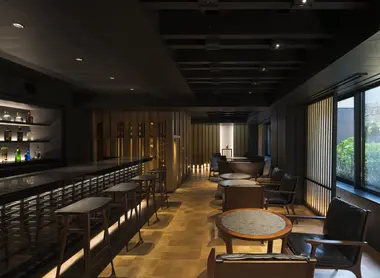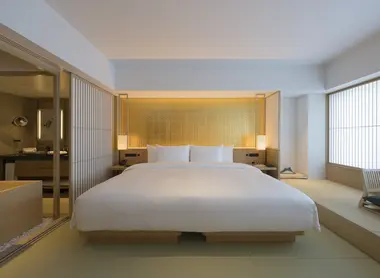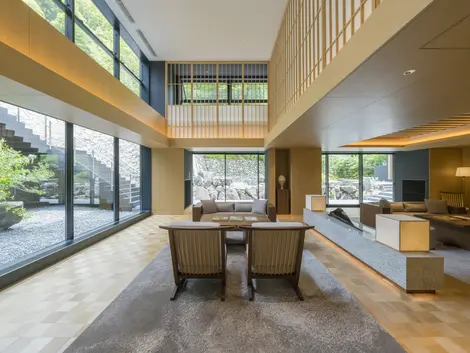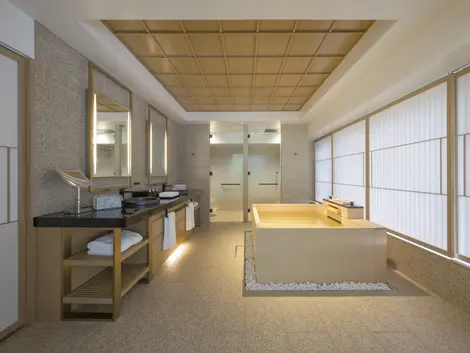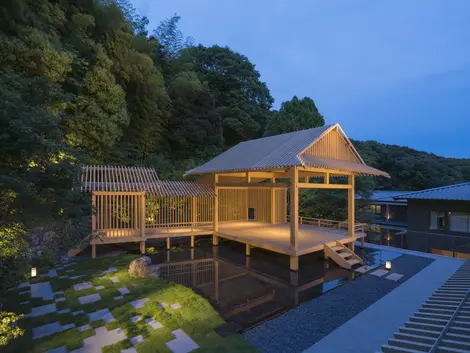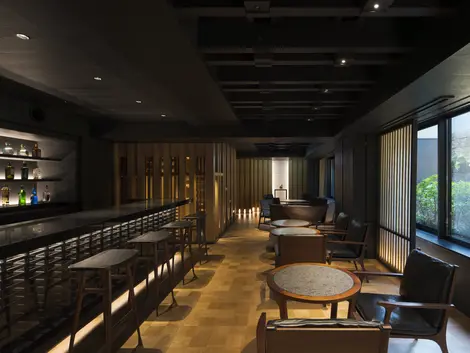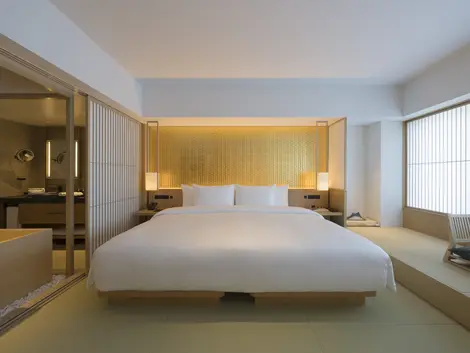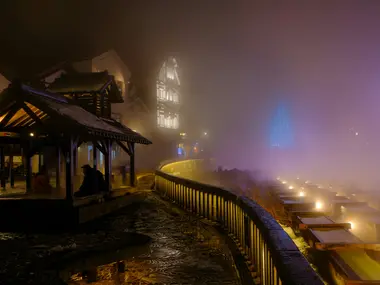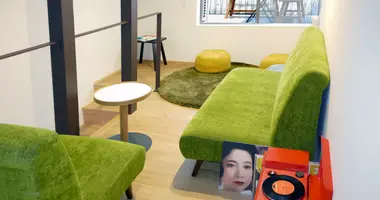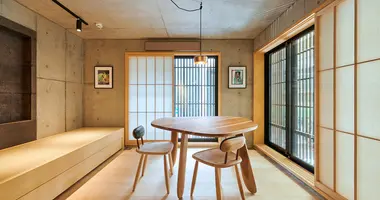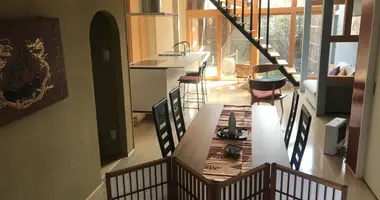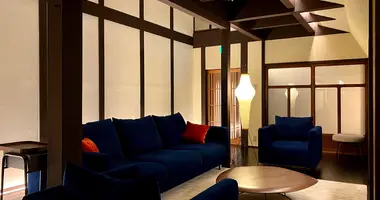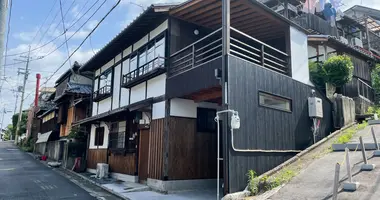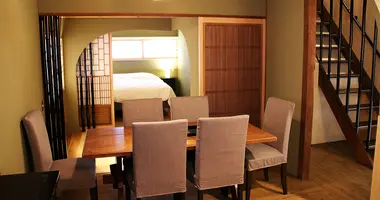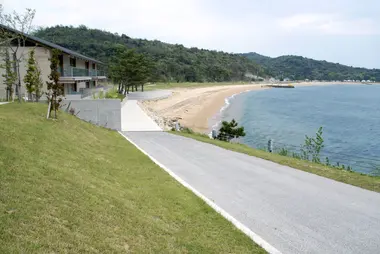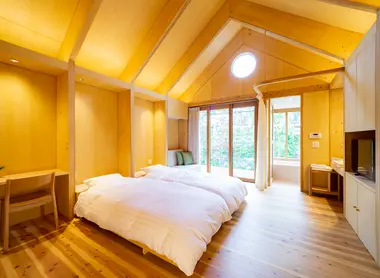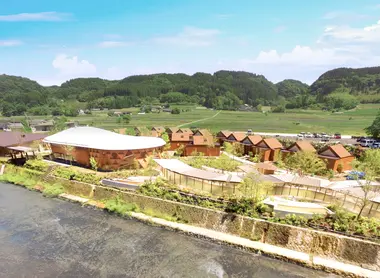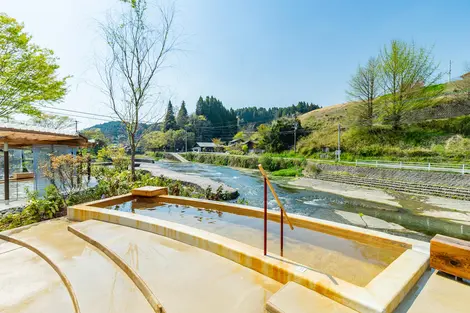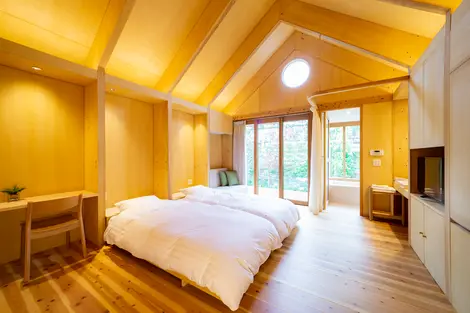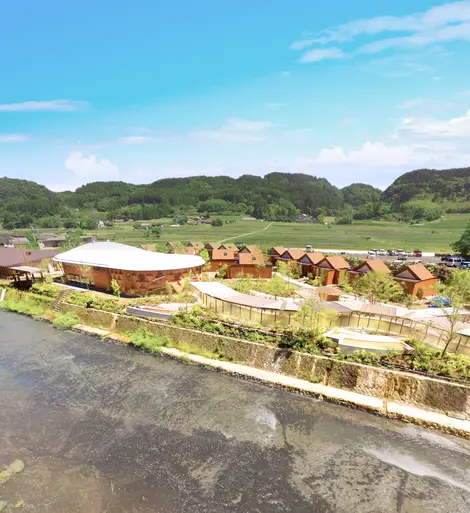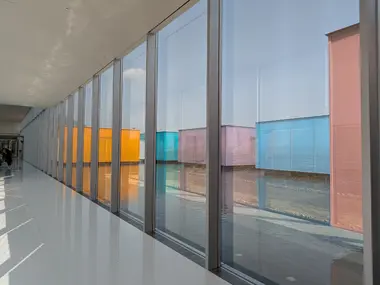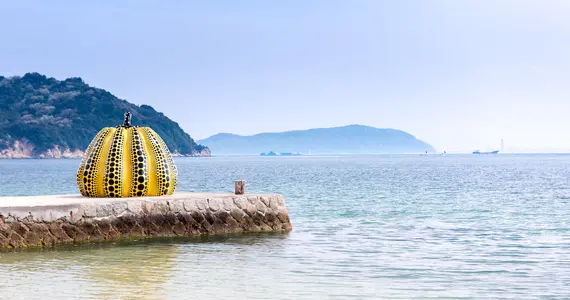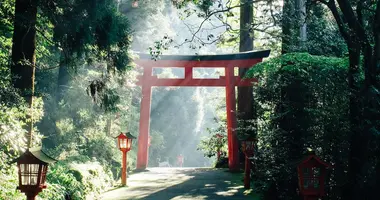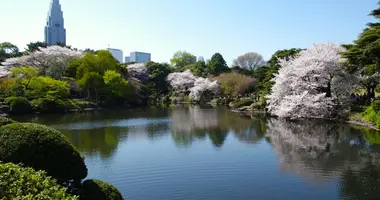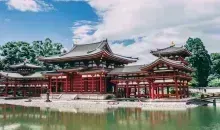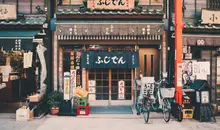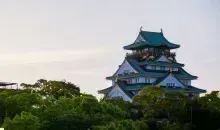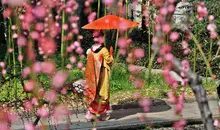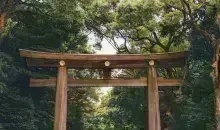The Best Architectural Hotels in Japan
- Published on : 14/02/2025
- by : Lucie G.
- Youtube
Choose any of these incredible hotels designed by renowned Japanese architects for an unforgettable experience during your trip!
When you think of Japanese architecture, temple and shrine styles are the first things that come to mind. In fact, there are over 77,000 temples and 80,000 shrines spread across the archipelago. Most of these buildings are made of wood, the most widely used material in Japan for its resistance to typhoons and earthquakes.
Modern and contemporary Japanese architecture draws on these Japanese building traditions, blending them with new styles, techniques and materials. Glass and concrete have become essentials for many world-renowned Japanese artists, such as Tadao Ando and Kengo Kuma! Both also attach great importance to blending their creations into their surroundings, into nature. Japan is now also hailed for ultra-modern, avant-garde designs, whether in the form of skyscrapers in the cities, or reinvented traditional houses and hotels in minimalist or brutalist styles in the middle of the countryside.
In addition to Tadao Ando and Kengo Kuma, many other Japanese architects have won international acclaim for their masterful approach and creativity. Kenzo Tange, known for, among other things, his design of the Hiroshima Peace Memorial, is one of the most important architects of the 20th century. More recently, Shigeru Ban has made a name for himself creating facilities for the survivors of natural disasters and using recycled materials.
Here, we present hotels designed by some of these great Japanese architects, which are at least worth a look during your trip for their brilliant architecture. If you choose to stay overnight, each of these establishments has its own unique design, and most offer top-of-the-range dinners and breakfasts in restaurants run by top chefs.
By Kengo Kuma
Kengo Kuma was born in 1954 in Yokohama. After studying at Tokyo University of Architecture and Columbia University, he founded his own firm, Kengo Kuma & Associates. Through his style, he revisits traditional Japanese architecture, notably the notion of transparency, and works particularly with light and the superimposition of materials via wood and stone.
- Banyan Tree Higashiyama
In the heart of the spiritual city of Kyoto, Banyan Tree Higashiyama blends the traditional and modern styles of Japanese architecture. The hotel's rooms are luxurious and modern, and what makes this hotel exceptional is the Noh theater and onsens it offers. Nestled on the edge of a bamboo forest, the hotel is not far from Kiyomizu-dera (12-minute walk), one of Kyoto's most beautiful temples. You can discover the finesse of Japanese food through gourmet meals prepared by renowned Kyoto chefs.
Where?- Higashiyama district, Kyoto
- Ginzan Hot Springs Fujiya Inn
Lost in the heart of the countryside near Sendai, the Fujiya Inn is a ryokan with an ultra-contemporary design, featuring a glass façade streaked with concrete. The building stands out from the rest of the establishments in the spa town of Ginzan, with its traditional Japanese aesthetic. Here, minimalism is the watchword, with spacious Japanese-style rooms containing only the bare essentials. The great strength of this establishment is its wide selection of baths, each offering a particular atmosphere of relaxation, day and night.
Where?- Ginzan Onsen (near Sendai)
- Hoshino Resorts KAI Yufuin
The rooms in this ryokan are actually small wooden houses in the middle of rice terraces. The dark wood of the houses' walls blends perfectly with the protruding glass of the surrounding fields. The indoor and outdoor onsens overlook the magnificent Mount Yufu and its surrounding nature. There's also a restaurant serving delicate kaiseki cuisine and Japanese breakfast. Accessible with the JR Kyudai line from Oita, this ryokan presents itself as the perfect opportunity to relax amidst Kyushu's lush nature. Enjoy a personalized experience in this luxury hotel that highlights the beauty of Japanese nature.
Where?- Yufuin (near Oita)
- Kusatsu Kimuraya
In the spa town of Kusatsu, the Kusatsu Kimuraya ryokan stands out for its impressive curved design. Its black façade is made of stone taken directly from the region's hot springs, while its shape evokes the fluctuations of steam escaping from the hot water in the onsens. The ryokan offers a single, very spacious room built with local materials. It features a private onsen overlooking the Yubatake, the steaming pool that symbolizes the small village.
Where?- Kusatsu Onsen (near Nagano)
Plus: Kengo Kuma has designed a large number of hotels in Japan, here are just a few in major cities:
- Hotel Royal Classic Osaka → Very chic hotel in Osaka, blending the style of an old kabuki theater with a modern tower.
- One@Tokyo → Luxury establishment, overlooking the Tokyo Sky Tree.
- ATAMI Kaihourou → All rooms offer a view of the sea, through the huge picture windows that turn this hotel into a glass house.
Discover our architect-designed homes!
By Tadao Ando
Tadao Ando is a self-taught architect from Osaka. He is strongly influenced by Le Corbusier and Brutalist architecture. With over 300 works to his credit, most of them in the Japanese archipelago, although his work on the Bourse du Commerce in Paris is of note in France. Ando harmoniously integrates natural elements into his creations, whose spaces become veritable places of refuge.
- Bennesse House
Bennesse House is located on the island of Naoshima and is both a hotel and a museum. This complex is the first and forerunner of architect Tadao Ando 's many creations on the art island. Surrounded by the works of the surrounding contemporary art museums, this hotel offers rooms with balconies and extraordinary views of the volcanic islands of the Seto Sea. Enjoy a traditional meal in a gourmet restaurant and take the shuttle bus to the various museums on the island. This hotel is so popular that room reservations must be made 180 days in advance! So plan your reservation carefully!
Where?- Naoshima Island
- SETOUCHI RETREAT by Onko Chishin
Located a few kilometers from Matsuyama on the island of Shikoku, this hotel offers a magnificent glimpse of Ando's architectural style. Concrete is the watchword, highlighting the forests and sea through buildings of simple geometric forms. The continuity between the structure and the surrounding nature is such that the water in the impressive infinity pool blends perfectly with that of the Seto Sea. This iconic hotel also exhibits the works of several contemporary artists (painters, landscape artists) within its walls, revealing the uniqueness of the region in terms of contemporary art. The restaurant offers traditional kaiseki cuisine using local ingredients.
Where?- Matsuyama
- The Shinmonzen
The Shinmonzen blends into Kyoto's Gion district, the surrounding scenery thanks to its architecture typical of old Japanese houses. The interior, on the other hand, is made up of luxurious suites of elegant minimalism, complimented by traditional Japanese materials such as bamboo, stone and lacquer. Spaces are bright, airy and calm in the midst of Kyoto's legendary district. Many rooms feature balconies overlooking the Shirakawa River and Japanese Cypress bathtubs. The Shinmonzen ryokan offers a true journey into the historic and religious heart of Kyoto.
Where?- Higashiyama, Kyoto
By Shigeru Ban
Born in 1957, Shigeru Ban is the youngest of the three architects featured here. His work is internationally recognized, notably for his emergency housing designs for disaster victims. He has been active since the Kobe earthquake in 1995, proposing the design of easy-to-build, practical hardboard houses. His architecture is both ecological, since he makes extensive use of recycled materials, and social, since he aims to help people find housing through his work.
- Kur Park Nagayu
This onsen specialized hotel is located just outside the city of Oita in Kyushu. Guests can enjoy traditional indoor onsens, as well as a mixed outdoor onsen and an onsen walk along the nearby river. The temperature of the baths is around 35°C, so you can soak up the benefits of the water's carbon. In terms of architecture, the vast buildings are made of wood and recycled paper, as well as glass, to let in natural light. The structures are spread over wide open spaces, and each room takes the form of a small chalet with a private onsen.
Where?- Taketa (near Oita)
- Simose Art Garden Villa
Simose is an artistic complex comprising a museum, a luxury hotel and a restaurant serving French cuisine. The Simose Art Garden Villa, designed by Shigeru Ban, offers two types of room: the Forest Villa, small white and wooden houses surrounded by vegetation, and the WaterFront Villas, with sea views, situated in front of small pools reflecting the colors of the sky. Ban's typical architecture can be seen in the long paper tubes that structure many of the villas, and the large windows that allow plenty of light into the rooms. The hotel offers privileged access to the Simose Art Museum's works, displayed in eight colorful moving galleries over a pool of water.
Where?- Otake (near Hiroshima)
Some other architect-designed hotels :
- The Conrad Osaka → Admire Osaka by night through the large windows of this hotel in the center of Osaka. What's more, you'll find four restaurants and bars perched high up in the tower. The Conrad is part of the Hilton Group, one of the world's largest hotel groups.
- Lake Biwa Prince Hotel → Designed by Kenzo Tange, this hotel offers magnificent views of Lake Biwa from its 35 floors, and also boasts a swimming pool and several bars and restaurants with panoramic views of the lake.
- Aman Hotel Tokyo → This 5-star, within the Otemachi Tower promises an unforgettable stay with its various restaurants (including a French patisserie!) and relaxing treatments available. The establishment is part of the Aman group of ultra-luxury hotels, which has used leading architects when it comes to the design of their building.
